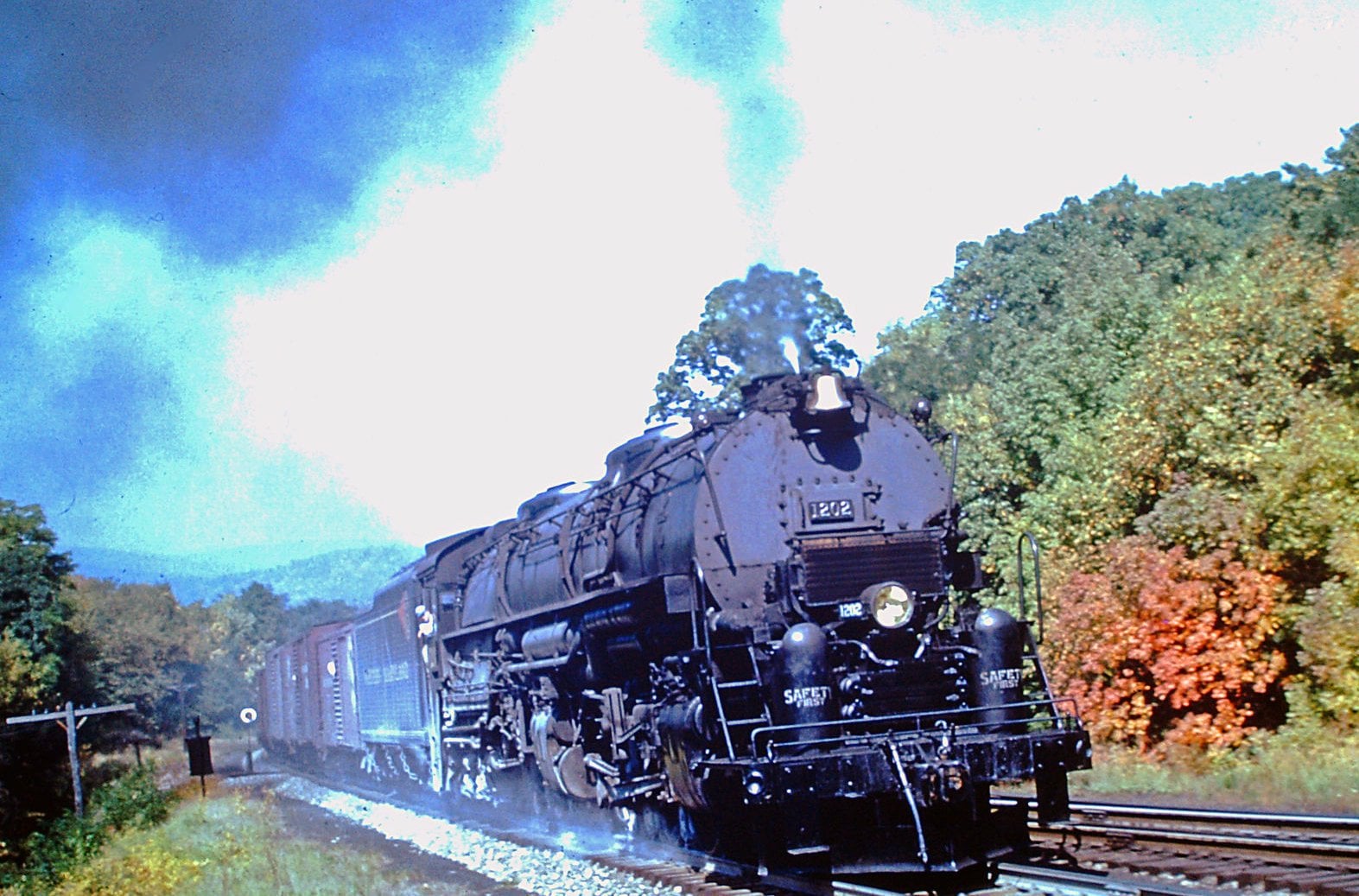Lehigh Valley Public Timetables (April, 1952)
Published: July 13, 2024
By: Adam Burns
Featured here is the Lehigh Valley Railroad's public timetable from the August, 1952 issue of the "Official Guide Of The Railways."
The Lehigh Valley, once a prominent transportation network in the northeastern United States, operated from the mid-19th to the mid-20th century. Among its notable contributions to the American railway system were its passenger trains, which included the famed Black Diamond Express.
The LVRR was established in 1846 primarily to transport anthracite coal from the mines of northeastern Pennsylvania to East Coast markets.
However, the railroad soon expanded into passenger service, offering routes that connected urban centers and provided an essential mode of transport for travelers.
One of the most iconic passenger trains operated by the LVRR was the Black Diamond Express, which began service in 1896.
Named for the anthracite coal it transported, the Black Diamond Express symbolized luxury and speed. It operated daily between New York City and Buffalo, New York, covering the 396-mile journey with unmatched elegance.
In an era where train travel was at its peak, the Black Diamond was notable for its schedule efficiency, sophisticated amenities, and the high-quality service provided to passengers.
The train’s consist typically included a combination of coaches, parlor cars, and dining cars, which provided passengers with plush seating and fine dining experiences.
The LVRR invested in high-quality construction and stylish interiors, ensuring that the Black Diamond Express catered to the higher-end market of leisure and business travelers.
The train's advertising promoted it as an experience of elegance and comfort, differentiating it from other travel options available at the time.
Apart from the Black Diamond Express, the Lehigh Valley operated several other passenger services that were integral to the region's transportation network.
These included commuter trains and local passenger services that linked the coal regions of Pennsylvania with larger urban centers, facilitating both daily commuting and longer-distance travel.
However, post-World War II, the rise of automobile travel and the expansion of the interstate highway system began to erode the dominance of railways.
The LVRR, like many other railroads, faced declining passenger numbers and revenues. By the 1950s and 1960s, the once-iconic passenger services were in steep decline.
In 1961, the LVRR ended its passenger operations entirely, including the storied Black Diamond Express.
The cessation of passenger services marked the end of an era for the LVRR, as it shifted focus back to freight operations. Eventually, in 1976, the Lehigh Valley Railroad was absorbed into Conrail, a consolidative effort to stabilize the faltering northeastern railway industry.
The legacy of the LVRR's passenger trains, particularly the Black Diamond, remains a testament to a time when rail travel was synonymous with luxury and vital connectivity.
The story of these trains reflects the broader narrative of the rise and fall of passenger rail in mid-20th-century America.
Recent Articles
-
EMD's "SD60" Series: SD60M, SD60I, SD60MAC
Aug 23, 24 10:38 AM
The SD60 replaced the troubled SD50 in the mid-1980s. While it saw high sales the model could not restore the builder's dominance. -
Bonhomie and Hattiesburg Southern Railroad: A Piney Woods Shortline
Aug 23, 24 12:01 AM
The Bonhomie and Hattiesburg Southern Railroad was a classic short line serving the logging/timber industry in southern Mississippi. Today, the tackage is owned by Canadian National. -
WM's 4-6-6-4 Locomotives (M-2): Fast Freight Engines
Aug 22, 24 12:58 PM
Western Maryland's 4-6-6-4's were a dozen fast freight Challengers built by Baldwin in 1940-1941. The railroad's feelings on the engines were mixed and the group was scrapped in the mid-1950s.







